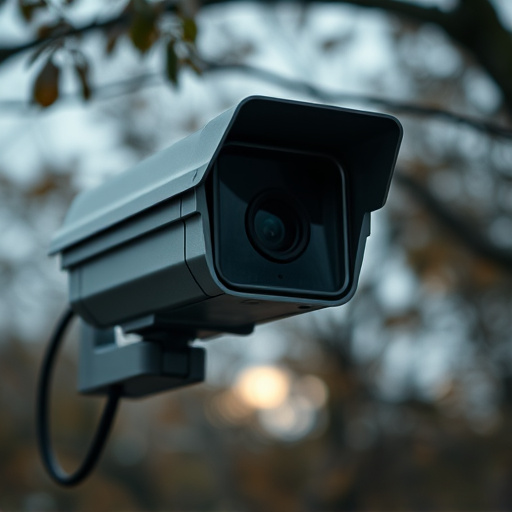The Spy Camera Artificial Intelligence Integration has transformed miniature surveillance devices from hidden tools to smart, AI-driven systems. These advanced cameras analyze footage in real-time for object recognition, facial detection, and motion tracking, enhancing security without compromising privacy. This technology offers enhanced home and asset monitoring, creative applications, and proactive threat prediction while raising ethical concerns that must be addressed to balance convenience with individual rights.
“Unveiling the future of home surveillance, this article explores the intriguing world of miniature spy cameras and their transformation with Artificial Intelligence (AI). From discreet devices to smart, AI-powered tools, we delve into how technology is quietly evolving. Integrating AI into everyday objects promises invisible monitoring, offering benefits like enhanced security and automated tasks. However, it raises concerns about privacy, ethics, and potential misuse. Discover the prospects of AI-integrated home surveillance systems and their impact on modern living.”
- The Evolution of Spy Cameras: From Discreet to Smart
- Artificial Intelligence: Enhancing Surveillance Capabilities
- Integrating AI into Everyday Objects: A Step Towards Invisible Monitoring
- Benefits and Concerns: Privacy, Ethics, and Security
- Future Prospects: AI-Powered Home Surveillance Systems
The Evolution of Spy Cameras: From Discreet to Smart
The evolution of spy cameras has come a long way from their discreet beginnings, transforming into sophisticated smart devices integrated with artificial intelligence (AI). Historically, these surveillance tools were designed to remain hidden, capturing moments undetected. However, technological advancements have led to a shift in focus towards creating cameras that are not only tiny but also intelligent and connected.
Today, spy cameras equipped with AI capabilities can analyze footage, recognize faces, detect motion, and even send alerts or record specific events automatically. This integration of AI enhances their functionality, allowing users to monitor activities remotely and receive valuable insights from the data collected by these miniature devices.
Artificial Intelligence: Enhancing Surveillance Capabilities
The integration of Artificial Intelligence (AI) into miniature surveillance devices has significantly enhanced their capabilities, making them smarter and more efficient. AI algorithms can process vast amounts of data in real-time, allowing spy cameras to identify specific objects or individuals within a frame. This technology enables them to learn from patterns, recognize faces, and even predict certain behaviors, elevating the level of detail captured by these tiny devices.
With AI integration, these miniature surveillance systems become more than just passive observers; they actively engage in data analysis, improving accuracy and reducing false alerts. Features like object detection, motion tracking, and face recognition are now accessible even in compact forms, making them versatile for various applications. This advancement opens up possibilities for enhanced home security, improved monitoring of valuable assets, and even creative uses in the field of art and design.
Integrating AI into Everyday Objects: A Step Towards Invisible Monitoring
As technology advances, the integration of artificial intelligence (AI) into everyday objects is becoming increasingly prevalent. This trend is no exception in the realm of surveillance, where spy cameras equipped with AI capabilities are now discreetly woven into our daily lives. These innovative devices, often referred to as “smart” or “miniature,” possess advanced features such as object recognition, facial detection, and motion sensing, enabling them to capture critical data without drawing attention.
The spy camera artificial intelligence integration represents a significant step towards invisible monitoring. With AI algorithms analyzing real-time footage, these cameras can identify specific individuals, detect unusual activities, or even predict potential hazards. This level of sophistication allows for enhanced security measures in homes, businesses, and public spaces, fostering an environment where privacy concerns are mitigated by the very objects we use daily.
Benefits and Concerns: Privacy, Ethics, and Security
The integration of Spy Cameras with Artificial Intelligence (AI) in everyday home objects presents a double-edged sword—a powerful tool for enhanced security and convenience, yet raising significant privacy and ethical concerns. On one hand, AI-powered miniature surveillance devices can offer advanced features such as automated object recognition, facial detection, and real-time analytics to detect unusual activities or potential threats within the home environment. This technology promises improved safety and peace of mind for homeowners.
However, the proliferation of hidden cameras in ordinary items raises critical issues related to individual privacy and data security. As these devices collect vast amounts of personal information, including private conversations and intimate moments, ensuring data protection and secure storage becomes paramount. Moreover, ethical considerations arise when discussing surveillance capabilities that can invade personal spaces, potentially infringing on citizens’ rights to privacy and fostering a culture of constant monitoring.
Future Prospects: AI-Powered Home Surveillance Systems
The integration of Spy Cameras with Artificial Intelligence (AI) marks a promising future for home surveillance systems. AI algorithms can analyze video feeds in real-time, enhancing security measures significantly. These intelligent systems can recognize familiar faces, detect unusual activities, and even predict potential threats, all while learning from user interactions. For instance, an AI-powered system could automatically alert homeowners or authorities when it detects suspicious behavior, such as unauthorized access or unusual patterns of movement within the home.
The advancement in Spy Camera technology coupled with AI integration opens up exciting possibilities for customized and proactive security solutions. From smart home assistants that can identify familiar friends and family members to advanced facial recognition systems that adapt to changing appearances, these innovations ensure a more responsive and efficient security network. As technology continues to evolve, we can expect even more sophisticated features, making home surveillance not just a tool for protection but an integral part of modern living.
The evolution of spy cameras, powered by artificial intelligence integration, signifies a significant step towards invisible monitoring. As these miniature surveillance devices become increasingly integrated into everyday home objects, we must carefully navigate the benefits and concerns surrounding privacy, ethics, and security. Future prospects for AI-powered home surveillance systems look promising, but it’s crucial to address and mitigate potential risks as this technology continues to advance and become more prevalent in our daily lives.
